The Europeans used to mistreat the natives almost everywhere they went either intentionally or through diseases they brought, weapons they distributed, alcohol they sold, etc. But few cases of annihilation have been as total as in the case of Tasmania
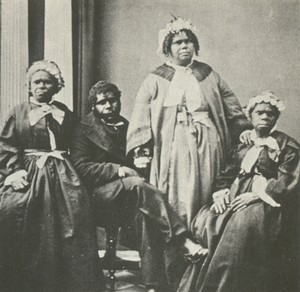
The aborigines in Australia, like the natives in America, New Zealand, Tahiti, Hawaii, Alaska and other places suffered terribly from the European occupation. The Europeans used to mistreat the natives almost everywhere they went either intentionally or through diseases they brought, weapons they distributed, alcohol they sold, etc. But only a few cases of the extermination of a people were as total as the case of the aborigines of Tasmania (many write "Tasmania" but after checking, it turns out that the correct way to write the name is Tasmania - Tasmania). This is a tragic story that includes horrible horror stories. I forewarn that some of the passages in this article are so difficult that I had a hard time writing this article.
It is worth noting that on Wednesday, February 13.2.2008, XNUMX, Kevin Rudd, the Prime Minister of Australia, gave a historic and important speech in which he apologized to the aborigines and their descendants for the suffering, the abuse, the harm, the kidnapping of the children and the other atrocities that were done to them. It was a historic and important day and the speech was very moving. Many Australians, among them also thousands of aborigines, gathered to hear the speech that was broadcast live on the media, many shed a tear and others simply wore shirts with "thank you" written on them.
Here is a video report from the YNET website about this public apology.
The aborigines in Tasmania before the arrival of the Europeans
Tasmania is a fairly large island (68,400 square kilometers) located south of the Australian continent. Today, Tasmania is an integral part of Australia and its population currently numbers about half a million people. Most of the island remains wild, similar to New Zealand, and is a tourist destination with breathtaking views. But the history of Tasmania is particularly dark.
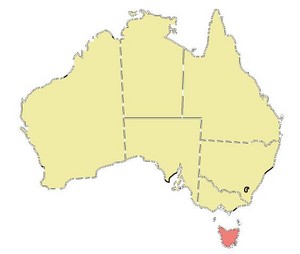
The aborigines arrived in Australia through South Asia at least 50,000 years ago and soon spread throughout the continent. About 24,000 years ago, following an ice age, a land corridor was created to the island of Tasmania, and at least one group of aborigines moved to the island and spread there. Avraham Shaked tells in his book "The Aborigines" about a prehistoric site from about 23,000 years ago that is located in the northwest of the island and about the Fraser Cave in southern Tasmania (Kotinka in its Aboriginal name) where remains of settlers from about twenty thousand years ago were found. As far as we know, this is the southernmost point the human race has reached during any ice age.
Life in Ice Age Tasmania must have been very difficult, similar to conditions in Alaska today. The Tasmanians, like all humans in the world, quickly acclimatized to the new living conditions, used the caves for shelter, hunted fish, shellfish, small marsupials and also marine mammals such as seals and sea lions. They used skins and furs and sewed clothes from them to warm their bodies in the cold that prevailed in the area. The ice age ended about 10,000-13,000 years ago, the sea level rose and left the inhabitants of Tasmania isolated from Australia and the rest of the world. The living conditions on the island remain quite difficult - thick forests, intense cold, snow that covers the area in winter and more. For this reason, the Tasmanian population maintained a constant size of about 4,000 - 5,000 people. This population density is similar to the population density of the aborigines in Australia as a whole.
The Tasmanians developed a technology for building rafts and basic sailing vessels that allowed them to sail in the stormy sea for a distance of up to a few kilometers from the coast (the mainland of Australia is about 240 km from Tasmania), but beyond that their technology was very basic and they mainly used basic stone tools. Mysteriously, the bone tools and fishing technology that they used for thousands of years disappeared from the Tasmanian "toolbox" at some point, and they did not know the hunting technologies of the Australian aborigines, which included the boomerang and the woomera (a device for accurately throwing a spear). They even lacked the means to start a fire on their own.
Apparently also culturally they had less rituals and customs than their aboriginal relatives who remained in Australia. So far, only a few remains of Tasmanian culture have been found - a few wall paintings in caves and a few paintings on tree bark. Apparently the difficult living conditions did not leave them much time for art and creation. A similar thing can also be found on the continent of Australia where most of the wall paintings, tools and evidence of an extensive culture were found in the coastal areas, where it was relatively easy to survive and the food was plentiful, compared to the arid desert areas where the inhabitants had to invest most of their time in survival.
In addition to this, there were physical changes in the body structure of the aborigines - they became shorter to cope with the cold, their body structure changed somewhat and their hair became curly.
Jared Diamond reminds us in his masterful book and winner of the Pulitzer Prize - "Guns, Germs and Steel", that the Tasmanians were the most isolated people in human history when for over 10,000 years they remained isolated on a remote island without any contact with other peoples, without seeing new technologies And without genetic mixing of any kind. This fact left the Tasmanians with very basic technology and no possibility to advance technologically. On the one hand, they didn't have the terrible wars that became an integral part of human history, nor the cruel plagues that killed millions throughout history, but on the other hand, when other peoples finally arrived, their fate was decided and they had no chance to defend themselves - neither technologically nor genetically, because they didn't They had a natural vaccine for the European diseases.
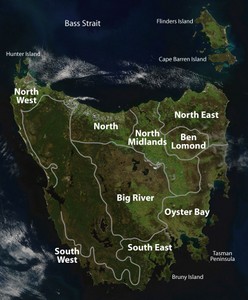
The arrival of the Europeans
The first recorded meeting between the Europeans and the Tasmanians was in 1642, when the Dutch navigator Janzon Tasman, after whom Tasmania is named, arrived. But it was an isolated event and for more than a century no Europeans came to Australia again. But then everything changed. Following the voyages of Captain Cook, which I wrote about in this article, English settlers began to arrive at the end of the 18th century to establish a penal colony in Australia. The first settlement was in the Sydney area and during the 19th century, additional penal colonies were established.
In 1798, British officers explored Tasmania and mapped its coast. In 1803, a penal colony called Hobart was established in Tasmania, which today has become the island's main city. The Europeans who arrived on the scene were tough jailers and even tougher criminals and soon a veritable massacre began in Tasmania under the auspices and encouragement of the local government. The struggle was informally called "The Black War".
Jared Diamond (the same one who wrote "Guns, Germs and Steel"), tells in his previous book - "The Third Chimpanzee" about how the arrival of the Europeans affected the Tasmanian population: "The whites kidnapped Tasmanian children as laborers, kidnapped women as concubines, put maimed men and killed them, invaded hunting grounds and tried to drive the Tasmanians off their land. The conflict soon focused on livestock, the most common cause of genocide in all of human history... One shepherd killed nineteen Tasmanians with an adjustable cannon loaded with nails. Four other shepherds ambushed a group of natives, killed thirty of them and threw their bodies over a cliff known today as Victory Hill." (p. 248)
The natives of course tried to resist the land grabbing and the massacre of their people, which only exacerbated the situation. The local government set up "patrol teams" of prisoners led by police officers who chased and killed Tasmanians everywhere in manhunting campaigns and systematic slaughter of natives. Rather shockingly, these hunting expeditions were attended by Aborigines who were specially brought from the Sydney area to act as trackers for the Tasmanian natives.
In 1828 martial law was declared in Tasmania and the police were authorized to kill any Tasmanian they found. At a later stage, it was decided to concentrate the indigenous population in one place and for this a monetary reward was announced on the heads of Tasmanians - 5 British pounds for each adult and 2 pounds for each child.
The diseases that the Europeans brought with them affected the natives even in places far away from the European settlement and the few who survived fell victim to the deadly alcohol to which the natives were particularly sensitive.
In only thirty years, the indigenous population of Tasmania, which had survived for more than 20,000 years in extremely difficult conditions, was reduced to only about 300 people.
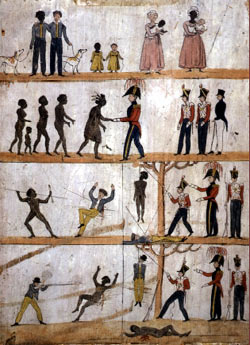
concentration camps
George Augustus Robinson, who was a Christian missionary on the island, made friends with one of the Tasmanian natives called Truganin. He learned a bit of the Tasmanian language and studied the culture and saw himself as the protector of the aborigines. He received a large sum from the government to gather the last Tasmanians in one place. Together with Targonini, in 1833 he managed to convince (sometimes the "persuasion" included the threat of a rifle), the last pure-bred Tasmanians to move to a new colony on Flinders Island - a fairly small island (about 1,300 square kilometers) located a little north of Tasmania. He promised them comfortable living conditions, that the move would only be temporary and that they would return to Tasmania as soon as possible. However, when they arrived on the island, they encountered a particularly difficult reality on an island that is inundated with odors and almost completely devoid of fresh water. Robinson ended up being a missionary and he tried his best to "save" Tasmanian souls by making them good Christians. The stay in the camp resembled more than anything a prison with strict discipline and included Bible studies, singing hymns and separating the children from their parents to "facilitate the process of their culture." The governor deliberately spared expenses in the hope that the natives would die of hunger and disease and that is what actually happened. Only a few of the infants born there survived more than a few weeks and the vast majority of the natives who arrived in Flinders died within a decade of their arrival. In 1847 only 47 were left alive and they were moved to their last stop at Oyster Cove south of Hobart. In 1859, only about a dozen of them remained.
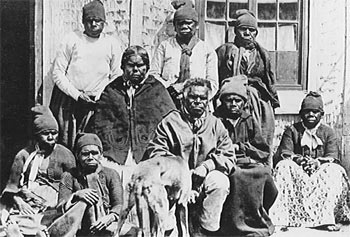
In the sixties of the 19th century, scientists around the world began to show interest in the Tasmanian population, but this led to the final blow to the poor natives. A new theory has claimed that the Tasmanians are the "missing link" in human evolution and museums all over the world have asked to receive body parts of native Tasmanians to study them. And so, in complete contrast to the aboriginal belief that the soul can rest in peace only when the body is buried in the homeland, body parts of natives and various tools and accessories began to be transferred to museums around the world. Here is another quote from Jared Diamond's book "The Third Chimpanzee" which tells what happened to The last surviving Tasmanian man - William Lanner (also called "King Billy") :
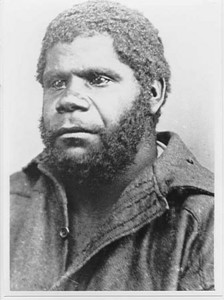
"After the death of the last man, William Lanner, in 1869, competing teams of doctors, led by Dr. George Stockel of the Royal Society of Tasmania and Dr. T. L. Crowther of the British Medical Association, fought over his body. These took the body out of its grave and returned and buried it alternately, cut off its organs and stole them from each other's suits. Dr. Crowther cut off the head, Dr. Stockel the hands and feet, and someone else took the ears and nose as souvenirs. Dr. Stockel made a pouch for tobacco from Lanner's skin." (p. 249). For the sake of accuracy, it should be noted that the tobacco pouch was prepared from Lanner's scrotum.
Troganini - the last Tasmanian
Troganini was born in 1812 in southern Tasmania. Her father was a chief of the people of Bruny Island and she is still considered the symbol of the native Tasmanians. But Trognini's life was unbearably difficult and the European nightmare haunted her until after her death.
Before she turned eighteen, she was killed by European whalers. Her first fiancé was killed trying to prevent Europeans from kidnapping her as a sex slave. In 1828 her two sisters were kidnapped and sold into slavery in South Australia. Shortly after she eventually got married, her husband was also killed. In 1833 Targonini moved with the rest of the survivors to the concentration camp on Flinders Island and from there to Oyster Cove. In 1873 she was transferred to Hobart where she remained until her death in 1876 when she was 64 years old.
The death in 1869 of William Lanner, who was Troganini's best friend, left Troganini as the last purebred Tasmanian on earth. She was horrified by what happened to Lanner's body, among other things because it was completely contrary to everything she believed in and therefore she begged that after her death her body would be cremated and scattered in the sea in the area near her birthplace. But her pleas were of no avail. Her body was buried in Hobart and after less than two years the body was exhumed by the Royal Society of Tasmania. The skeleton was put on display in a museum in Hobart and parts of her body were transported to England.
In 1976, a century after her death, the museum in Hobart agreed to give up the skeleton due to public pressure. Trognini's body was finally cremated and her ashes scattered in the sea near her birthplace as she requested. In 1997 the Royal Albert Museum from Muriel, England returned a bracelet and necklace to Tasmania and in 2002 pieces of hair and skin found in a collection at the Royal College of Surgeons in England were returned.
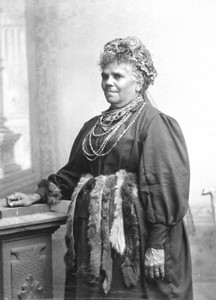
Although today it is customary to see Troganini as the last true pure-blood Tasmanian, it is worth noting that after Troganini's death someone named Fanny Cochrane Smith claimed that she was the last true Tasmanian. Smith was the first girl born and survived the camp on Flinders Island and at the age of 7 was transferred to a Christian boarding school. Despite this, she felt a deep connection to the Tasmanian heritage and learned as much as she could about the tradition, the language and the customs. Although she received a plot of land and a monthly grant from the government, she continued to collect food in the traditional way including even diving to collect oysters and shellfish. She was considered an excellent cook and an exemplary hostess and in 1899 and 1903 she recorded several traditional songs in the Tasmanian language that remain to this day as the only recorded evidence of the Tasmanian language and songs. To this day, many of those who see themselves as Tasmanian aborigines are her descendants.
Epilogue
The extinction of the pure-bred Tasmanian natives also obliterated almost all traces of their culture, language, history and customs that characterized them. Since then, many attempts have been made to try and preserve something of the Tasmanian heritage, but this is almost impossible since all the heritage was passed orally from generation to generation. The few finds in the form of stone tools, wall paintings, evidence and artifacts, still leave many gaps in Tasmanian culture, gaps that we may never be able to fill. And yet there is a certain hope - today there are several thousand descendants of mixed Tasmanians and Europeans, some as a result of the rape and possession of Tasmanian sex slaves by the Europeans and some as descendants of Penny Smith - Tasmanians who were born into a different world and completely different from the world in which their ancestors grew up. Some of those descendants try to preserve the tradition and exert public pressure to recognize the known heritage sites, preserve the memory of the extinct people and try to preserve even a tiny bit of the lost culture.
Further reading
- Avraham Shaked - The Aborigines - A Journey to Dream Time (map release)
- Jared Diamond - the third chimpanzee
- Jared Diamond - Guns Germs and Steel
- Richard Dawkins - The Ancestor's Tale
- Tony Hurwitz - Blue Latitudes
- Aboriginal Community of Tasmania website
- The history of the aborigines in Tasmania (Wikipedia in English)
(This article is taken from Amnon Carmel's blog which deals with futurism, technology, science and more)

13 תגובות
so sad.
And on this it is said, "He who lives in a glass house, should not throw stones at others."
Gillian, isn't it a pity for the venom you pour? It hurts you and your image much more than it hurts the editor of the site or the writers.
And thanks to Amnon Carmel for the fascinating article.
Something about translating foreign names:
Physics is also written with the letter S.
The reason why this word is written in Hebrew with the letter "Z" is the way it is pronounced in foreign languages.
The letter S is pronounced as "Z" when followed by a vowel and as "S" when followed by a consonant.
Avi:
Another thorn to another iodine.
Kevin Rudd's speech was already delivered so it was in February 2008 and not December 2008.
Oops!
I meant, of course, Gillian and not Hagit.
Sorry, Hagit
Friends - seriously!
Did anyone really think that Hagit complained about the missing letter "y"?
It was just a cover story to vent the venom that builds up in her every time someone contradicts her alien preaching.
It is a bit difficult to refer to a comma that is out of place in such a difficult article
and important
Gillian, thank you for your attention. I fixed it, what could be simpler than that. Unfortunately, proofreading is a TRADEOFF with the possibility of translating another article or improving the site with additional content, but since this is the Internet, if someone discovers a mistake I correct it.
Beyond that, this is an excellent opportunity to thank Amnon Carmel for the privilege of publishing his interesting articles on the Hidan website as well.
"Sorry, I thought this was a serious scientific paper that at least proofreads"
What is the connection between a serious scientific paper and proofreading?
A very interesting article and by the way, not translated but original (originally published on Amnon's blog). How sad that human history is full of such atrocities.
Dogari, what are you eating movies, did you come to read translated articles at a reasonable to good level or did you come to complain and show everyone that you are here
Enough of the nitpicking, just give constructive and not destructive criticism, none of you have picked up the ball and built a better site than this and apparently it won't happen in the near future, so just say thank you
Sorry, but this is pettiness for its own sake, and that's exactly what it says - "on the tip of iodine"!
In only one case is a letter missing - "The Europeans used to abuse **children** almost everywhere they went". This is a writer's mistake that also occurs in newspapers and professional literature all over the world. From here to the discrediting of the science website, the road is very long...
Children??? :-0
Sorry, I thought this was a serious scientific journal that at the very least proofreads the articles before publication, from now on I will think twice before taking publications on the site seriously.